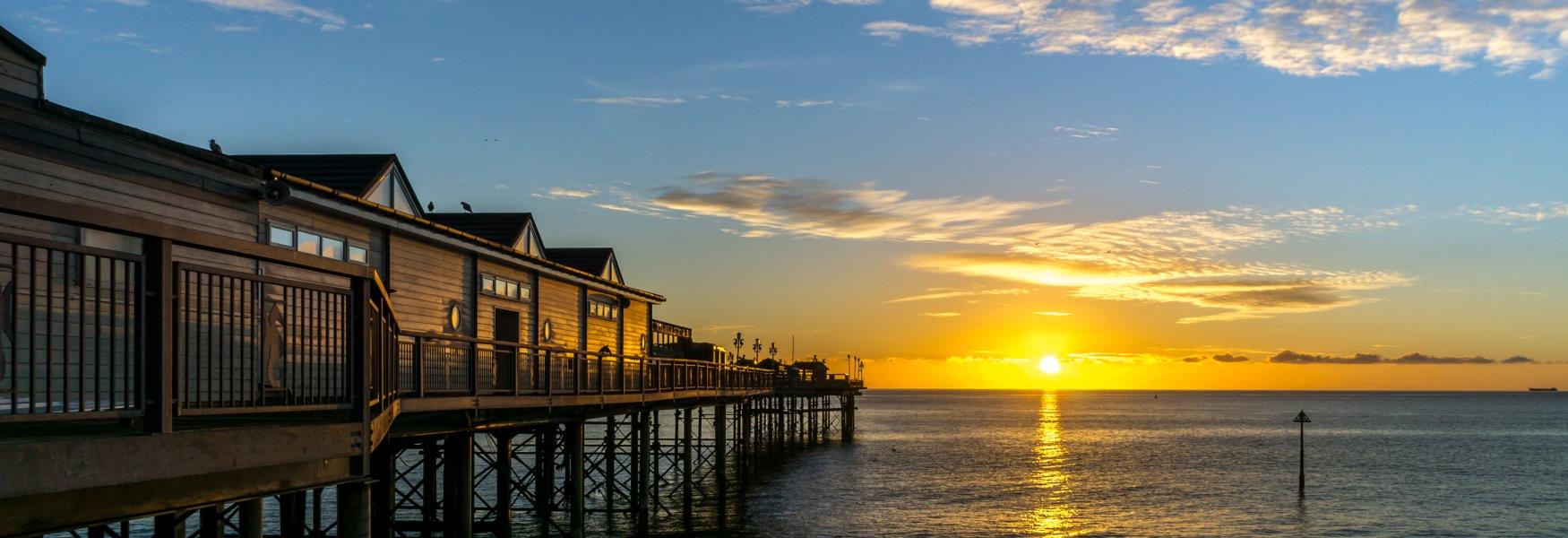.png) Located in the beautiful South Hams, Totnes is a vibrant market town which makes the perfect holiday destination. With a high street of fantastic independent retailers and eateries. At the bottom of the town you’ll find the River Dart which provides a great walking route and it’s also a hot spot for watersports such as kayaking and paddleboarding, at the top of the high street is Totnes Castle a beautiful Norman Castle which overlooks the whole town.
Located in the beautiful South Hams, Totnes is a vibrant market town which makes the perfect holiday destination. With a high street of fantastic independent retailers and eateries. At the bottom of the town you’ll find the River Dart which provides a great walking route and it’s also a hot spot for watersports such as kayaking and paddleboarding, at the top of the high street is Totnes Castle a beautiful Norman Castle which overlooks the whole town.
If you’re looking to learn about the history of this wonderful Anglo-Saxon town, you’ve come to the right place! Read on to find out more.
The earliest recorded history of Totnes dates back to 907AD when the first castle was built, but it’s thought that it extends much further back than this. According to legend, the Brutus Stone was the first thing Brutus of Troy stood on when he discovered Britain, proclaiming “Here I stand and here I rest, and this good town shall be called Totnes”. Whether this story is fact or fiction, we still find it absolutely fascinating! You can still visit the remnants of the stone when walking up Fore Street, next to building number 51.
Returning to actuality, as mentioned above, Totnes is thought to be founded in 907 when King Edward the Elder fortified the area; chosen because of an ancient path which allowed the crossing of the river at low tide and so the settlement could become a trading point. It also provided safety in the event of a Viking Invasion, but as this threat subsides, the town became a haven for merchants and sometime between 959 – 1100 AD, the town produced coins.
During the 11th century and the Norman Conquest, William the Conqueror bestowed settlement to Judhael of Totnes who build the motte and bailey castle that stands today, as well as a priory. The castle is currently owned and managed by English Heritage so you can visit the site to imagine was life would have been like hundreds of years ago. It’s a fascinating tourist attraction and an absolute must-visit if you’re in the area, even if just for the panoramic views of the town and across to Dartmoor. After exploring the castle keep and bailey you can walk around the walls to the outer bank which is covered in wildflowers in the spring and relax under the shelter of the trees; the perfect spot for a picnic.
Judhael didn’t retain his land for long as he rebelled against William the Conqueror. Because of this the town would have fallen in decline if it weren’t for the townspeople who elected their own officials and worked hard to develop their cloth trade. By 1206 the town had prospered so much that King John granted it a royal charter; the second town in Britain to receive this honour. This meant the town was free to make its own laws and was able to set up their own guild and thus the ‘Gydallia of Tottas’, was built.
During the 13th and 14th century, major remodelling was done on Totnes Castle, including the circle stone keep at the top of the mound and just outside the castle is a stone arch which is all that remains of the medieval North Gate into the town.
By the 15th century the castle was owned by the Duke of Somerset and St Mary’s Church was rebuilt, likely to the third church on its site. Totnes soon became the second richest town in Devon, and was a leader in the cloth trade. As tin mining had become increasingly popular in Devon, Totnes was also an important exporter of this particular mineral. During this century, Berry Pomeroy Castle was also built. It’s owned by English Heritage too and sits on the outskirts of Totnes.
In 1553 King Edwards VI granted Totnes a charter, allowing the Benedictine Priory that was originally built in the 11th century to be used as a guildhall and a school. Part of the priory building still stands today but much of it was destroyed during the dissolving of monasteries under the rule of King Henry VIII. In the 1600s the new Guildhall was converted into a magistrate court and during the English Civil War soldiers would lodges here. Oliver Cromwell even visited to discuss the war with general and parliamentary commander-in-chief Thomas Fairfax. The guildhall was also used as a town prison with the addition of cells up until 1887. Some of the cells are currently occupied by the town council offices and the town council sits around the very tables where Cromwell once discussed tactics for ending the war.
The Royal Seven Stars was built in the late 1600s, an Inn and pub that is still operational today. Daniel Dafoe, the novelist and journalist, famous for writing Robinson Crusoe in 1719, stayed here in 1720 and enjoyed residing here. The Royal Seven Stars is still around today and thrives as a busy pub at the bottom of Fore Street, currently owned by St Austell Brewery.
Berry Pomeroy Castle was expanded in the 1600s by Sir Edward Seymour, the Duke of Somerset, after the Pomeroy family fell into financial difficulties and sold the land to the Seymour’s. The Duke planned a great Elizabethan mansion within the castle walls and intended it to be the most spectacular home in Devon, but much of the project was left unfinished. The castle was left abandoned by the late 17th century when the eldest son of Edward Seymour moved to Wiltshire. It laid untouched for a hundred years but then began to draw artists and sightseers in the late 18th century to marvel at the ruins. It still attracts visitors from far and wide and it’s even speculated that the castle is haunted with ghostly apparitions supposedly being seen inside the ruins.
The cloth trade began to decline by the 18th century in Totnes and thus the town had to rely more on its position as a market town and trading point by the river. It was also in a rich agricultural region which helped it to survive. The town had grown rapidly during the 18th century and early 1800s. A new bridge was built in 1828 which lead to the development of Bridgetown by the Duke of Somerset and was bought into the borough in 1834. Quays and warehouses along the river were built by the Duke, as well as the Seymour Hotel and the Church of St James, now known as St John’s.
In 1847 the Totnes Railway Station was opened by the South Devon Railway Company and connected to Newton Abbot and Plymouth. The two-track platform was originally covered by wooden sheds and an engine shed was built south of the line. Totnes soon became the junction for the Buckfastleigh, Totnes and South Devon Railway line to Ashburton, in 1872.
Moving onto the early 20th century, Totnes was once again in danger of decline after losing its notability as a market centre. However, it was rescued by C and T Harris Ltd, a Wiltshire bacon factory who bought pigs in South Devon and set up a factory which created jobs for hundreds of people. Cow & Gate also helped to save the town by creating a dairy near the Totnes Railway Station before the Second World War. Plus, a timber yard was also built along the river, as part of Messrs Reeves who imported timber from the Baltic countries. These industries have now gone; the bacon factory is currently a supermarket and the others have been turned into housing.
In 1925 the Dartington Estate was bought by Dorothy and Leonard Elmhirst which was previously a neglected 14th century estate, and thus the Dartington Experiment was born. Situated just outside of Totnes, they restored the estate buildings and set up a range of farming, forestry and educational projects and finalised The Dartington Hall Trust in 1932. It also set out to create Dartington Hall School, Dartington Tweed Mill and later on, Dartington Glass. It also rapidly became a haven for artists, writers, philosophers and musicians from around the world. Dartington Hall is still very much an attraction with plenty to see and do; from family activities, live music, theatre productions and outdoor purists. They also have a great number of food and drink options.
In an air raid during World War II in 1942, the western platform on the freight-only line of the railway was damaged, as was the Ashburton branch train which killed two people. In 1958, after Great Western Railway nationalised, the passenger service to Ashburton was withdrawn with freight continuing until and the line closed in 1962. However, a group of businessmen decided to reopen the line as a steam-operated branch line and a commercial company called the Dart Valley Light Railway. The first passenger trains ran on this railway line in 1969, but only up Buckfastleigh and the last two miles of the line to Ashburton was severed to make way for the expanding of the A38. The Dart Valley Railway Company announced the lines closure in 1989 as it wasn’t economically viable for them anymore and the volunteers who had been involved in the company had the chance to take it over as a registered charity. The company was renamed the South Devon Railway Trust and since then the line has expanded to create a loop at Staverton to enable an additional train to run. The South Devon Railway still runs today as a visitor attraction with a glorious historic steam railway transporting visitors from Totnes to Buckfasleigh.
In much more recent history, in 2006 Totnes became the first ‘transition town’ which refers to grassroot community projects that aim to increase self-sufficiency to reduce the potential effects of oil production, climate destruction and economic instability. In 2007 the town also introduced its own currency, the Totnes Pound to support the local economy, but due the increasing using of cashless methods of paying, it came to an end after 12 years.
And there we have it – a brief history of Totnes! Of course there’s so much more to discover about the town’s past, but that’s best done by visiting! If you’re thinking of visiting Totnes be sure to check out our where to stay, food and drink, things to do and what’s on pages. We’d also love to see your Totnes snaps so be sure to tag us in your posts using @VisitSouthDevon. You can stay up to date with our latest blog posts, offers and more by signing up to our e-newsletter here. And, don’t forget to follow us on Facebook, X and Instagram.
Related
Comments
Comments are disabled for this post.



 to add an item to your Itinerary basket.
to add an item to your Itinerary basket.










